King Cobra: Longest venomous snakes in the Earth
The king cobra (Ophiophagus hannah) is one of the most iconic and fearsome snake species in the world. The king cobra is the world’s longest venomous snake, capable of reaching lengths of up to 18 feet (5.5 meters) or more. King cobras are generally solitary and territorial snakes. They are known for their intelligence and are capable of learning and problem-solving. King cobras are carnivorous and primarily feed on other snakes, including venomous ones.
Taxonomy:
The king cobra (Ophiophagus hannah) belongs to the following taxonomic classification:
- Kingdom: Animalia
- Phylum: Chordata
- Subphylum: Vertebrata
- Class: Reptilia
- Order: Squamata
- Suborder: Serpentes
- Family: Elapidae
- Genus: Ophiophagus
- Species: O. hannah

Habitats and Locations:
The king cobra (Ophiophagus hannah) is native to a variety of habitats in Southeast Asia.
They are native to the forests of Southeast Asia, particularly in countries like India, Indonesia, and the Philippines. They are also found in parts of southern China.
- India: Found in various regions of India, including the Western Ghats, the Eastern Ghats, and parts of the northeastern states.
- Indonesia: Present in parts of Indonesia, particularly in the islands of Java, Sumatra, and Kalimantan (Borneo).
- Malaysia: Distributed in the forests and grasslands of Malaysia, including the Malaysian Peninsula and Borneo.
- Philippines: Occurs in some regions of the Philippines, such as Palawan.
- Southern China: Found in parts of southern China, including Yunnan and the southwestern provinces.
Tropical Rainforests:
King cobras are often found in tropical rainforests with dense vegetation.
Grasslands and Bamboo Clusters:
They also inhabit grasslands and areas with bamboo thickets.
Elevated Terrain:
In some cases, they are also found in elevated terrains and hills.
Human-Altered Landscapes:
King cobras can adapt to human-altered landscapes, including agricultural areas and villages.

Venom:
The venom of the king cobra (Ophiophagus hannah) is a potent mixture of various toxins, primarily neurotoxins.
Neurotoxicity:
- The primary action of king cobra venom is neurotoxic. It affects the nervous system, disrupting the transmission of nerve signals and leading to paralysis.
Cytotoxic Components:
- In addition to neurotoxins, the venom may also contain cytotoxic components that can cause damage to cells and tissues.
Venom Yield:
- King cobras are known to produce a considerable amount of venom, and a single bite can deliver a large dose of toxins.
Lethality:
- King cobra venom is highly lethal, and if envenomation occurs, it can lead to respiratory failure and death if not treated promptly.
Anticoagulant Properties:
- Some king cobra venoms may also have anticoagulant properties, affecting blood clotting. This can contribute to complications in envenomed individuals.
Research and Medicine:
- Snake venoms, including that of the king cobra, are subjects of scientific research. Components of venom are studied for their potential medicinal properties, such as the development of painkillers or treatments for certain medical conditions.
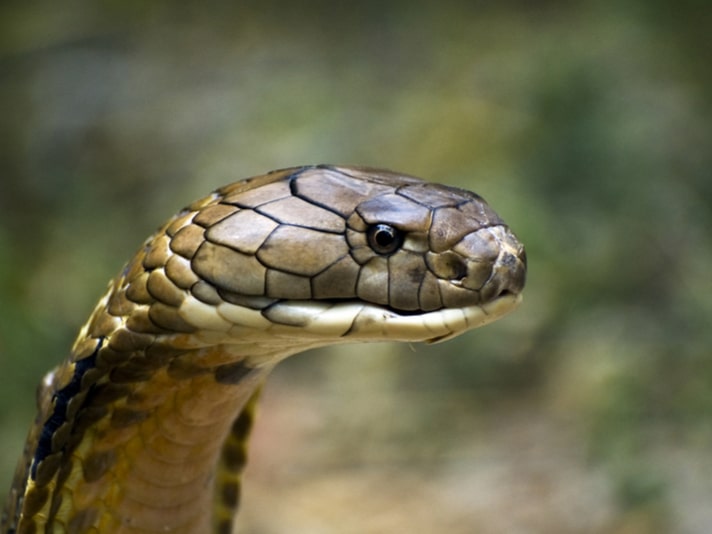
Behavior of the king cobra:
Aggressiveness when Threatened:
- King cobras are known for their relatively aggressive behavior, especially when they feel threatened. When confronted, they may raise the front part of their bodies off the ground, spread their hood, and emit a distinctive hiss.
Hooding Display:
- One of the most iconic behaviors of the king cobra is its ability to spread a hood, which is a loose, elongated section of skin on its neck. This display is used both for defensive purposes and as a threat display to deter potential predators or threats.
Territoriality:
- King cobras can be territorial, especially during the breeding season. They may defend their territory from other king cobras, particularly males competing for mating rights.
Cannibalistic Tendencies:
- King cobras are known to be cannibalistic, meaning they may prey on other snakes, including individuals of their own species. This behavior is more commonly observed in captivity, but instances have been documented in the wild.
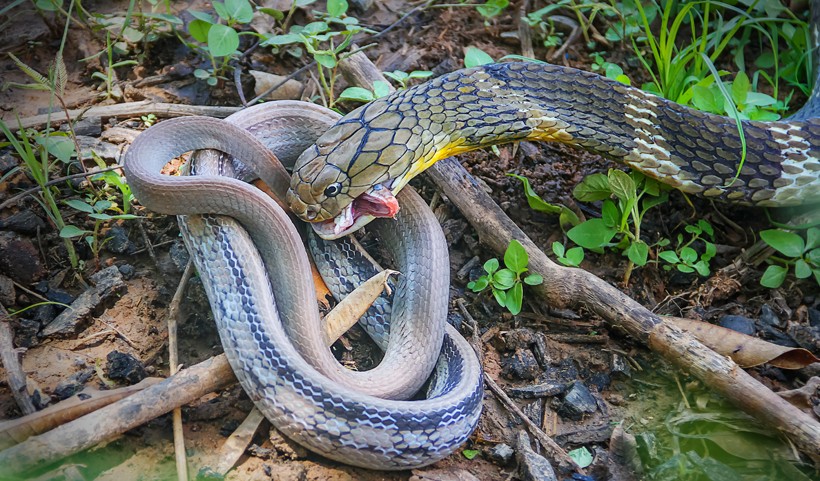
Excellent Climbers:
- Despite their large size, king cobras are excellent climbers. They can ascend trees and bushes in search of prey or to escape threats.
Nocturnal and Crepuscular Activity:
- King cobras are often more active during the night (nocturnal) or during the dawn and dusk periods (crepuscular). This behavior helps them avoid the heat of the day.
Predatory Behavior:
- The primary diet of king cobras consists of other snakes, including venomous ones. They are skilled hunters and use their keen sense of smell to track down prey.
Lifespan:
In the wild, king cobras generally have a lifespan of about 20 years, but this can vary. In captivity, where they may receive optimal care and protection from natural threats, they might live longer. The exact lifespan can be influenced by factors such as diet, health, and the conditions of captivity.
Length:
King cobras are the longest venomous snakes in the world, and they can attain impressive lengths. In the wild, they typically range from 10 to 13 feet (3 to 4 meters). However, some individuals have been reported to reach lengths of up to 18 feet (5.5 meters) or more. The size of a king cobra can be influenced by various factors, including genetics, age, and the availability of prey.
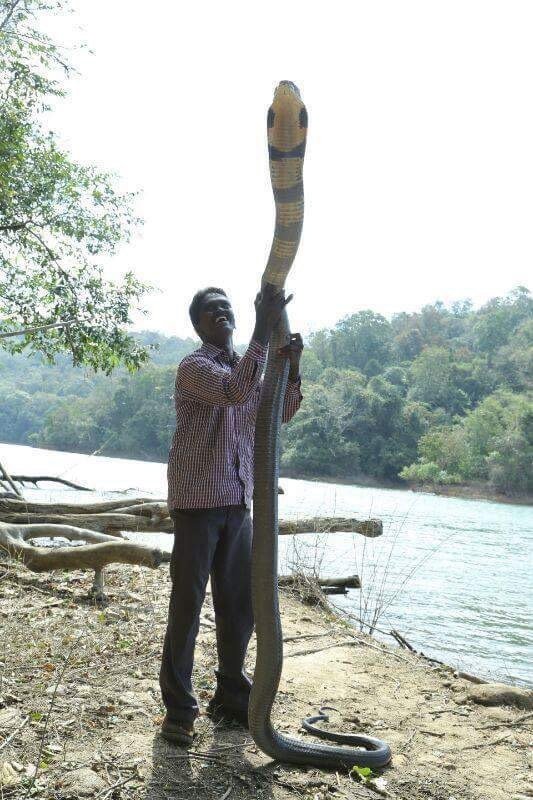
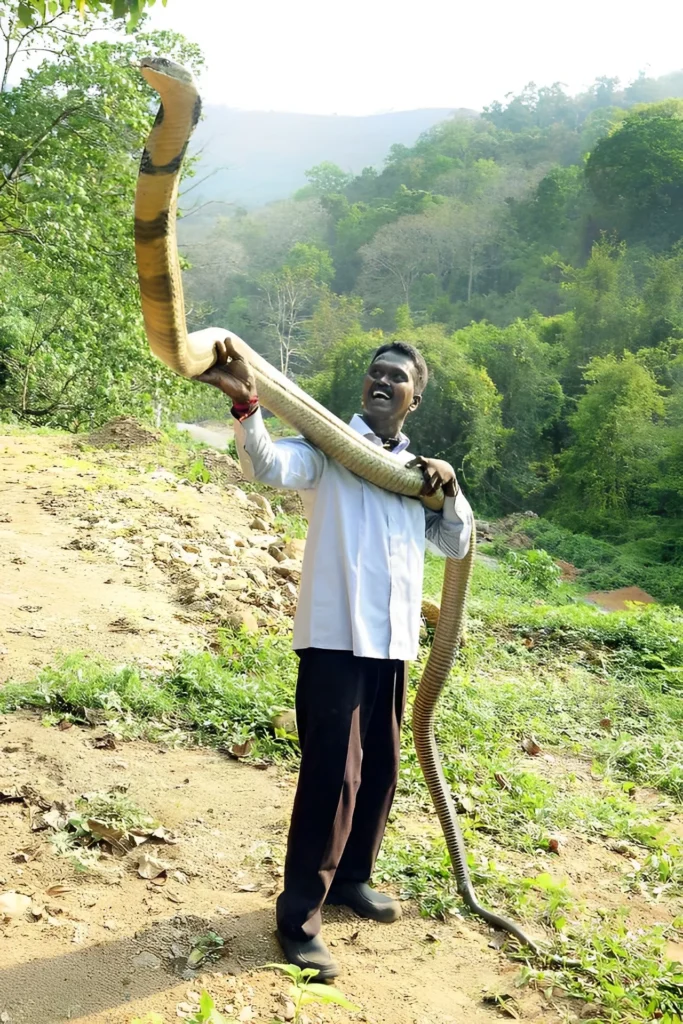
Diet:
- Primary Diet: King cobras are carnivorous and primarily feed on other snakes, including venomous ones. They are skilled hunters and use their keen sense of smell to locate prey.
- Cannibalism: They are known to exhibit cannibalistic tendencies, meaning they may eat other individuals of their own species, especially in captivity.
Reproduction:
- Oviparous: King cobras are egg-laying snakes. The female typically lays a clutch of 20 to 40 eggs in a secluded nest, which she guards until they hatch.
- Parental Care: In a rare behavior among snakes, female king cobras provide a degree of parental care by guarding the eggs until they hatch.
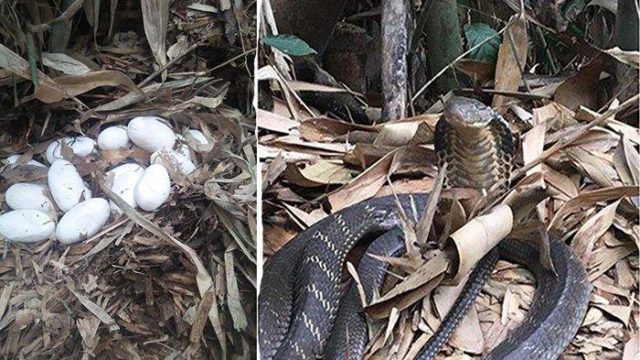
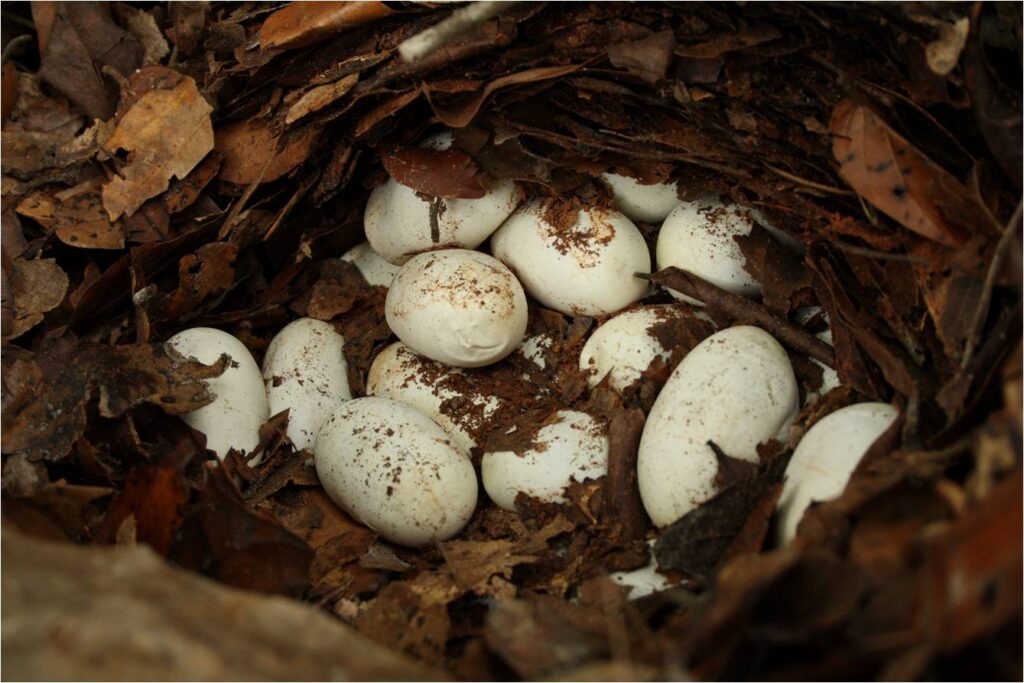
Conservation Status:
- IUCN Status: The king cobra is listed as a species of “Vulnerable” by the International Union for Conservation of Nature (IUCN).

Cultural Significance:
- Mythology and Religion: In some cultures, particularly in parts of India, the king cobra holds significance in mythology and is sometimes associated with deities. It may be featured in religious ceremonies.
Anti-venom and Human Interactions:
- Venom Potency: The king cobra’s venom is potent and can be fatal, causing respiratory failure if not treated promptly.
- Anti-venom: Specific anti-venom is available for treating king cobra bites. Prompt medical intervention is crucial, and fatalities are relatively rare with appropriate treatment.
- Human Avoidance: King cobras generally avoid human contact but can be aggressive when threatened. Encounters with humans are infrequent.
Conservation Efforts:
- Habitat Protection: Efforts are made to protect the natural habitats of king cobras, including tropical rainforests, grasslands, and swamps.
- Research and Education: Conservation initiatives often involve research on king cobra behavior and ecology. Public education programs aim to reduce human-snake conflicts and promote coexistence.
- Legislation and Enforcement: Legal measures may be in place to protect the species, and enforcement is important to prevent illegal trade and hunting.
